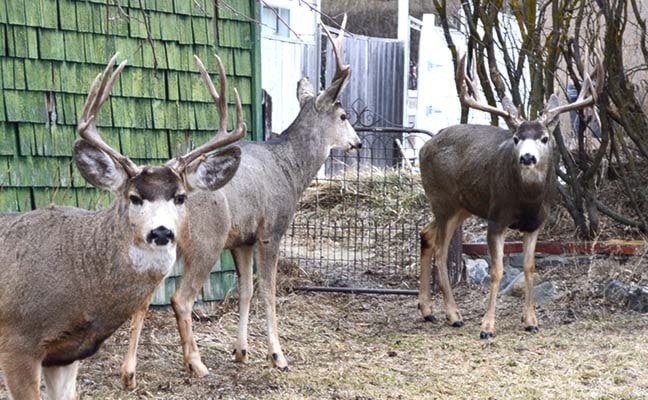Cranbrook, BC (February 23, 2015) – With the City of Cranbrook poised to conduct an urban deer population reduction program, Council and staff continue to field questions about relocating the deer instead of euthanizing.
At this point, translocation is not an option that the province will even consider. A cull is the only management tool the province makes available to municipalities to try to alleviate some concerns of local residents, specifically around aggressive animals.
Wayne Staudt, the chief administrative officer for the city of Cranbrook, gave an update on options for dealing with urban deer during a city council meeting on Feb. 23rd.
Staudt told council that there is some work being done on translocation, but it is not being looked at as an alternative to a cull.
"It's not, do this [translocation] and not do the cull," Staudt said. "This is just a pilot project that is being considered and we're part of the group in the East Kootenay that is looking int this. The earliest that any translocation can take place — just a pilot project to see the survival rate of the animals and so forth — will be 2016."
The province does not have the scientific evidence saying that translocation of deer works and that urbanized deer relocated out of town would survive the
transportation or survive in the location their moved to. But that could change over the next number of months.
The City of Cranbrook has been involved along with the District of Elkford, the City of Kimberley, the District of Invermere and the Ministry of Forests, Land and Natural Resource Operations (MFLNRO) in providing seed funding ($1,000 contribution by the City of Cranbrook in 2014) and some staff support toward the development of a proposed East Kootenay Urban Mule Deer Translocation Trial.
The District of Elkford is the overall project lead. Vast Resource Solutions has been contracted to research and develop the proposed trial program and seek external funding resources.
Ian Adams, a wildlife biologist with Vast Resource Solutions, is already working on the project, which is aiming for a budget of roughly $100,000 to complete the entire study.
The ultimate goal is to see what urban deer survivorship and movements are like post-translocation from an urban setting.
"The key point and particularly what the province is after is the post-release monitoring afterwards," said Adams. "What are the fate of the deer? Are they getting picked off by predators right away? What levels of survivorship do we have?"
Adams adds that areas in the U.S., such as in New Mexico and Utah, there are deer translocation trials where survivorship is up to 50-75 per cent.
"Those experiences, to a large extent, have driven the province to say, 'Okay, lets take a look at this,'" said Adams. "Fifty per cent survivor rate doesn't sound all that good, but it's a lot better than a cull."
What is most important for people to understand that the trial, if approved by the province, would be a scientific study and not meant to remove large numbers of deer from the community.
The proposed program would capture, relocate and radio-collar a handful of deer and release them, monitor their movements and see if the deer survive and where they go.
A tentative work plan is expected sometime later in 2015, at which time Council and staff from each participating municipality and the MFLNRO will have an opportunity to review and provide feedback on the work plan.
There is potential that the translocation trial could begin early in 2016, however this is dependent on adequate funding and the approval of the work plan.
